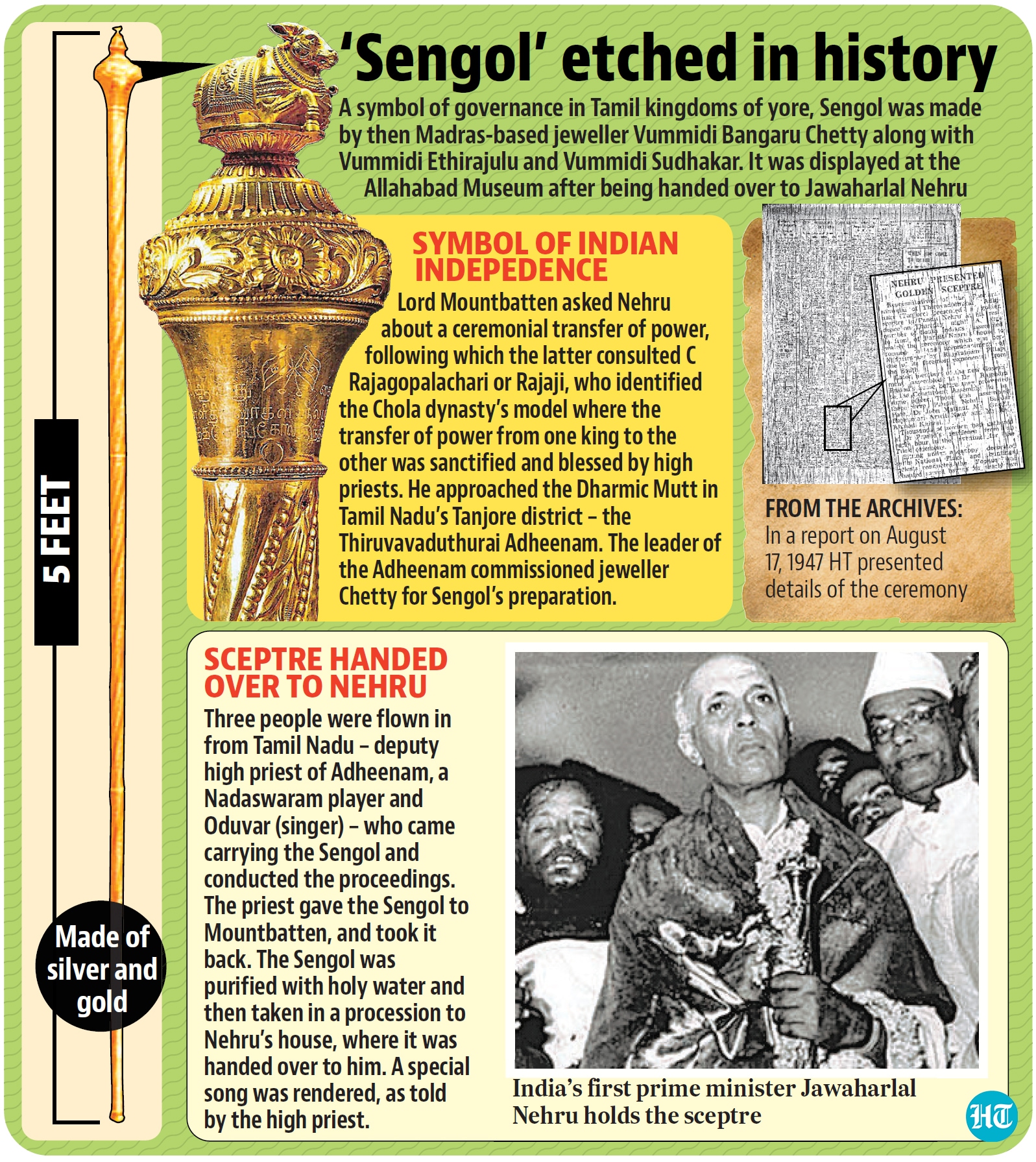New Parliament to house sceptre symbolising 1947 power transfer
A sengol, a symbol of governance in Tamil kingdoms of yore, was made by Madras (now Chennai) jewellers Vummidi Bangaru Chetty.
New Delhi: Made of silver and gold, the five-feet long sceptre was handed over by Lord Mountbatten to Pandit Jawaharlal Nehru on August 14, 1947 as a symbol of transfer of power.

A sengol, a symbol of governance in Tamil kingdoms of yore, it was made by Madras (now Chennai) jewellers Vummidi Bangaru Chetty. It was then displayed in The Allahabad Museum.

On Sunday, it will be installed near the Speaker’s seat in the new Parliament, which will be inaugurated by Prime Minister Narendra Modi, Union home minister Amit Shah announced at a press briefing on Wednesday.
Also Read: What is ‘Sengol’ (sceptre) to be installed by PM Modi in new Parliament on May 28
“Sengol, which has an important place in our history, means righteousness. Its recipient has the order to rule justly and fairly. Those elected to serve the people must never forget this. And that’s why this Sengol will be dedicated to the nation. It will be displayed in Parliament and will be taken out on special occasions,” Shah said.
The home minister said the new building is a testament to Modi’s vision of creating a new India, which combines modernity with our heritage and traditions. “When the PM learnt about it (Sengol), he decided to adopt it as a national symbol of Amrit Kaal. Now, the tradition (from August 14, 1947) will be revived,” Shah said. Amrit Kaal is the government’s descriptive term for the 25 years between 2022 and 2047, the centenary of Indian independence.
Recalling the events of August 14, 1947 , Shah said the process began when Lord Mountbatten posed a query to Nehru about a ceremonial transfer of power, following which the latter consulted C Rajagopalachari or Rajaji.
“Rajaji identified the Chola dynasty’s model where the transfer of power from one king to the other was sanctified and blessed by high priests and Sengol was a symbol of handover. Tamil Nadu’s Thiruvaduthurai Adheenam mutt (In Tanjore), established in 14th century, was approached by Rajaji to make a Sengol. The mutt commissioned the work of making the five-feet Sengol, which was completed and flown to Delhi. And Pandit Nehru accepted it in the presence of Dr Rajendra Prasad (who became first President of India) and others,” Shah added.
Asserting that the Parliament is the most suitable and sacred place for installing this historic sceptre, Shah said it will make the spirit of August 15, 1947 “unforgettable”.
He said the heads of all 20 adheenams, including the Thiruvaduthurai adheenam, have been invited for the ceremony on Sunday.
The home minister further said that PM Modi will honour 60,000 workers who contributed to the construction of the new Parliament building.
PM Modi had laid the foundation stone of the new Parliament building on December 10, 2020, but construction was delayed due to the second wave of Covid-19 pandemic in 2021.
Spread in an area of 64,500 square meters and part of Central Vista project, it has been constructed with an estimated cost of ₹971 crore. The new building offers spacious seats, latest facilities and tablets on each desk. It has provision for sitting of 543 members in the Lok Sabha while 250 in the Rajya Sabha. It will have a capacity to house around 1,280 MPs for a joint session.
The government decided to construct a new Parliament building due to lack of space in both the Houses in the current premises.
Responding to a question on opposition parties deciding to boycott the inauguration of Parliament on the grounds that it should have been by inaugurated by the President, and not the Prime Minister, Shah said the matter should not be politicised.






